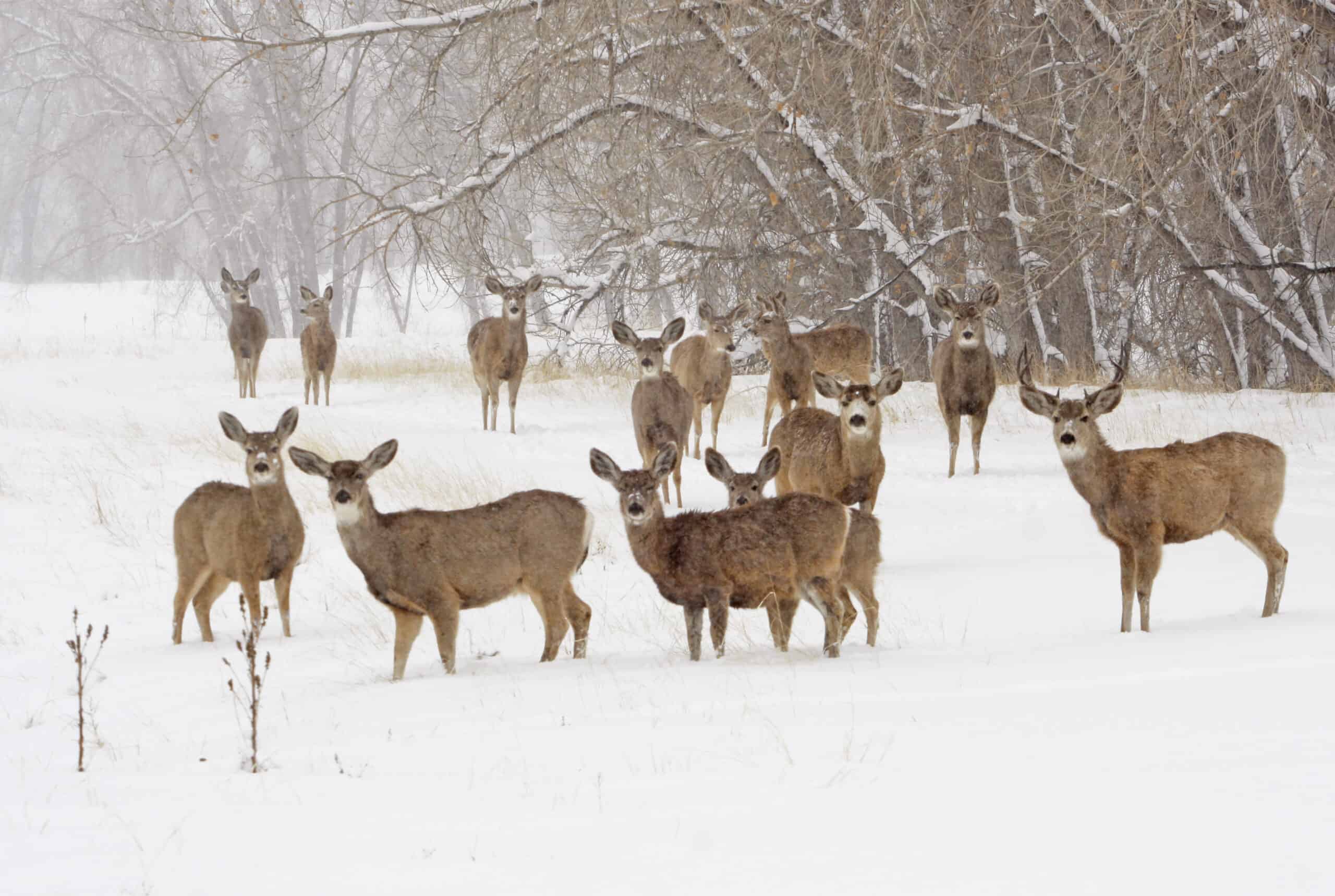Share this article
TWS2022: Deer ride autumn ‘frost wave’ of disappearing resources
Researchers tracked mule deer across Wyoming to find what drives their movements
Researchers tracking migration are used to watching ungulates surf along a “green wave” of freshly sprouting vegetation during the spring, munching their way along a nutritious journey. But what happens when the cold weather begins to descend on their summer foraging grounds?
Researchers discovered they ride a “frost wave” back to where they were the winter before.
Most previous research on mule deer (Odocoileus hemionus) focused on the way they follow the spring green-up, as this period is an important time for fawning or calving. But researchers neglected to look at the fall migration. TWS member Anna Ortega, a PhD candidate in ecology at the Wyoming Cooperative Fish and Wildlife Research Unit at the University of Wyoming, wanted to learn more about what happens as the temperatures get colder.
“We know that temperate ungulates track the green up in the spring, but what do they do in the fall?” she wondered.
For unpublished research presented at The Wildlife Society’s 2022 Annual Conference in Spokane, she and her colleagues placed more than 200 GPS collars on mule deer migrating between southcentral Wyoming and northwestern Wyoming from 2011 to 2020.
They integrated the location data they gathered from the collars with data they took from satellite imagery on snow cover, snow depth and plant phenology where snow hadn’t yet fallen.
Ortega and her colleagues found that, in general, these mule deer go from areas with higher snow cover to areas of less snow cover during the fall. That typically means they move to lower elevations. “The majority of the animals are starting their migration before snow piles up and as temperatures dropped on their summer range,” Ortega said. She calls this migration the “frost wave.”
But the wave didn’t move at a consistent pace. Many of the mule deer stop for a period in areas where the forage was particularly good, where snow hadn’t yet fallen.
Get it while it’s hot
The researchers believe deer surf the “frost wave” in order to maximize the residual forage left as the weather gets colder and snow begins to fall and cover the plants they eat. “They may be trying to recover the last bits of resources before winter,” Ortega said. “Autumn migration isn’t as simple as going from point A to point B.”
As the climate continues to change, she said that mule deer may change the decisions they make about where and how long to stop for foraging breaks. “With climate change, it’s possible that they change their responses to snow,” Ortega said.
Better knowledge about the migratory behavior of mule deer is important, since it has implications for land management. If deer are making decisions about the way they use land as they migrate, it’s important to keep their route free from roads, fences or other kinds of artificial barriers that could complicate their routes, Ortega said.
“Being able to freely move and freely make those decisions is important,” she said.
Header Image: Mule deer migrate ahead of a “frost wave” during the fall. Credit: John Carr/USFWS








